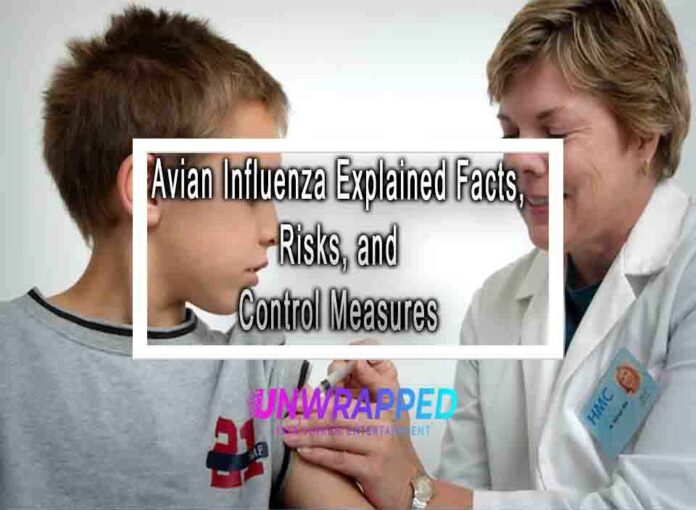Avian influenza, commonly known as bird flu, is a viral infection that primarily affects birds, including domestic poultry and wild birds. It can occasionally infect humans and other animals, and some strains have the potential to cause severe illness. Here are facts, risks, and control measures related to avian influenza:
Facts:
- Causes: Avian influenza is caused by influenza A viruses, which are classified into various subtypes based on two proteins on the surface of the virus: hemagglutinin (H) and neuraminidase (N). Subtypes H5, H7, and H9 are known to have caused avian influenza outbreaks in poultry.
- Transmission: The virus can spread through direct contact with infected birds, their bodily fluids (such as saliva, nasal secretions, and feces), and contaminated environments. It can also be transmitted through the handling, processing, or consumption of infected poultry products.

- Human Infection: Some avian influenza strains, particularly H5N1 and H7N9, can infect humans, leading to severe respiratory illnesses and, in some cases, death. Human infections usually result from close contact with infected birds.
- Pandemic Potential: Avian influenza viruses have the potential to evolve and adapt to human-to-human transmission, which could lead to a global pandemic if a highly contagious strain emerges.
Risks:
- Economic Impact: Avian influenza outbreaks in poultry can have significant economic consequences, including culling of infected birds, trade restrictions, and loss of market access.
- Public Health Concern: Human infections with avian influenza viruses are a public health concern due to their potential for severe illness and death. Monitoring and early detection are essential to prevent outbreaks.
Control Measures:
- Surveillance: Continuous monitoring of bird populations, especially domestic poultry and migratory birds, is essential for early detection of avian influenza.
- Quarantine and Culling: In the event of an outbreak, infected birds and those at risk of infection are culled to prevent further spread.
- Biosecurity: Implementing strict biosecurity measures on poultry farms can reduce the risk of avian influenza transmission, including controlling access to farms, using protective clothing, and regularly disinfecting equipment and premises.
- Vaccination: In some cases, vaccination of poultry may be used as a preventive measure, but it must be carefully managed.
- Safe Handling of Poultry Products: Proper cooking and handling of poultry products can prevent the transmission of avian influenza to humans.
- One Health Approach: Collaboration between the human health, animal health, and environmental sectors is vital for surveillance, response, and control of avian influenza.
- Pandemic Preparedness: Preparedness plans for the potential emergence of a highly pathogenic avian influenza strain capable of human-to-human transmission are essential for rapid response and containment.
Avian influenza is a complex and dynamic issue that requires vigilance and international cooperation to mitigate its risks to poultry and public health. Control measures are focused on preventing and managing outbreaks in birds to reduce the potential for human infections and pandemics.











